The Stallion Jumping Commission at the 2020 KWPN stallion show
story – Christopher Hector and Gemma Alexander
photos – Jacob Melisen, DigiShots and Roslyn Neave
The KWPN stallion commission this year was headed up by Cor Loeffen, a long time assessor at the Dutch stallion selections. He started our little English language conference by outlining the overall picture the commission was looking for…
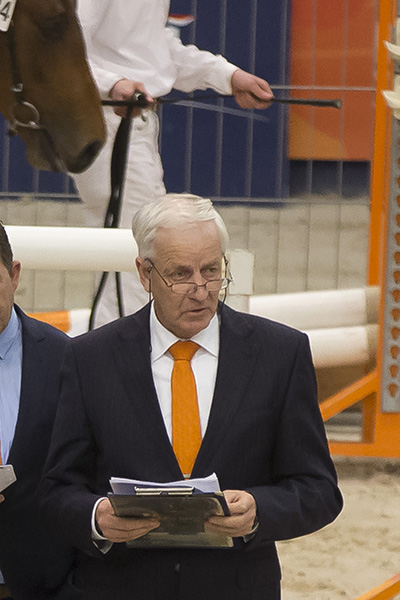
“Today we had the same criteria we have had all the time: rectangular is very important. In the KWPN Studbook, we need scope, and for scope it is important that the horse is rectangular. Normally the smallest height for our horses is 164cm, and when the horse is small, it is even more important that he is rectangular. Mostly if the horse is smaller than 164 we put him out. We look at the correctness of the front legs and the hind legs, that is important but when the correctness in the fundament – the limbs – is not optimal, but he jumps good, and the pedigree is good, we can take him.”
“When they jump, we are happy when the horses jump in a natural way, that they are not ‘prepared’ at home. Some horses jump spectacular and we can let them go to the performance test, but they are not awarded the premium.”
But one of the horses that did receive a premium looked very prepared – the Heathrow…
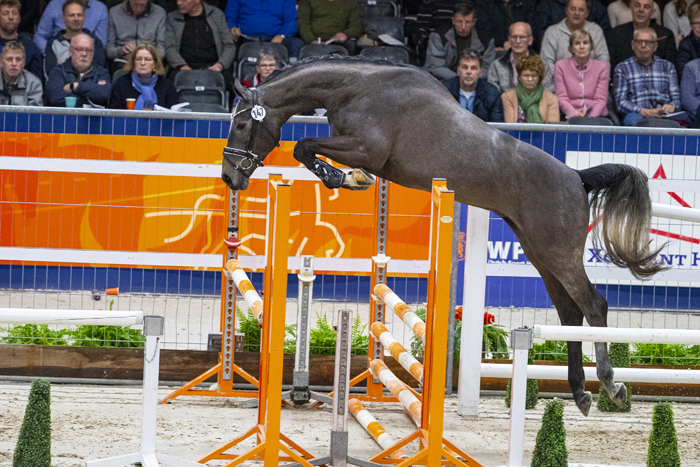
The Heathrow – a ‘little prepared’
“That was a little prepared, No 146, but acceptable, we had also the Comme il Faut / Contoki, No 47, that was far too much, he can go to the performance test, but for the premium stallion, we don’t accept that.”
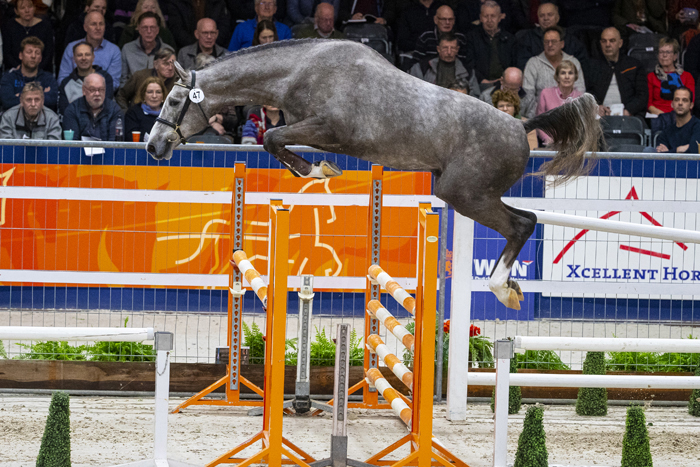
No 47, Mattias – TOO prepared…
Story continues below advertisement
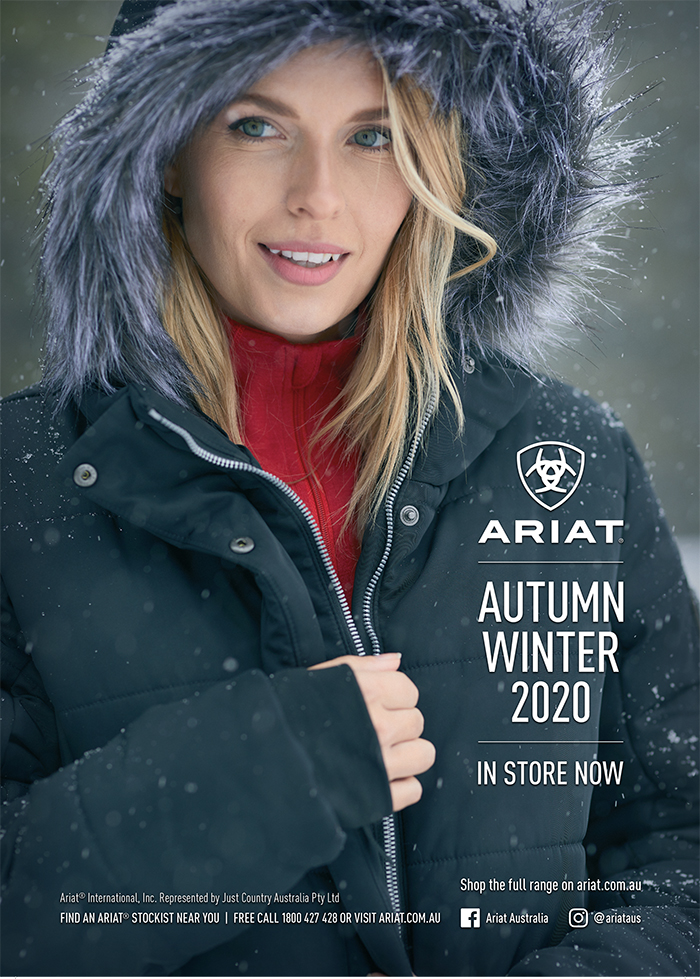
“Today we have progeny from young Dutch stallions, Heathrow, Inaico, Impressive, we are happy we can have offspring from these young stallions and they do a very good free jumping. Mostly with the Dutch breeders, they go to an older stallion, and not a young stallion, but now we have younger stallions and also from a good mare line, it is important that the young stallions get good mares.”
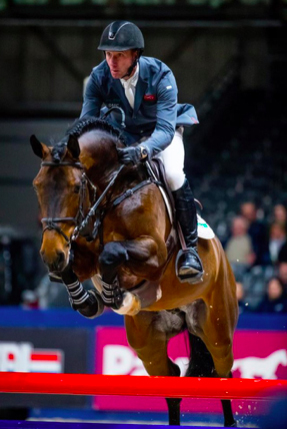
Impressive VDL – one of the younger sires represented…
It’s very hard to get the jumping breeders to use younger stallions, they want the famous ones…
“They want to breed for an auction, and when you look at the price of a foal from a young stallion and the price of the foal of an older one, the difference is €4,000, the foals from a well-known stallion bring €4,000 more than from a young one. So the breeders take an older stallion.”
Young stallions vs older in the sire lineup?
Jumping breeders seems to fairly evenly spread their attention between established sires, current champions and younger, upcoming sires, with current sires born 2001 to 2010 being slightly more popular that the others at 39% of the lineup. Interestingly, upcoming sires were more represented than established sires, which appears to be a relatively new phenomenon amongst jumping breeders despite being much more common in the dressage world.
Of the 39 stallions selected to go on, 10 (25.6%) were by established sires born pre-2000, 16 (41.0%) were by stallions born 2001 to 2010, and 13 (33.3%) were by upcoming sires born 2011 or later.
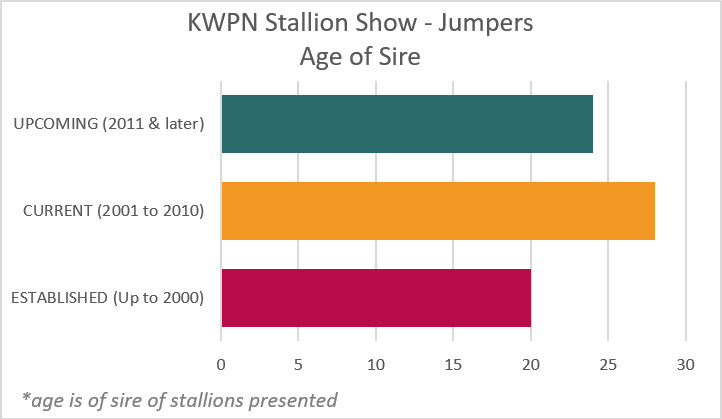
How do you encourage the breeders to use the young stallions?
“We try to do that. In the premier group there was one Inaico (Indoctro / Baloubet du Rouet), one from Impressive (Douglas / Contender), one from Heathrow (Der Senaat / Dollar de la Pierre), all young stallions, so we try to do that. Yesterday we had an older stallion, Cornet Obolensky, and Agenix, older but not a famous one, but one who went 1.60m…”
Once, for five faults in Mannheim…
“You did your homework.”
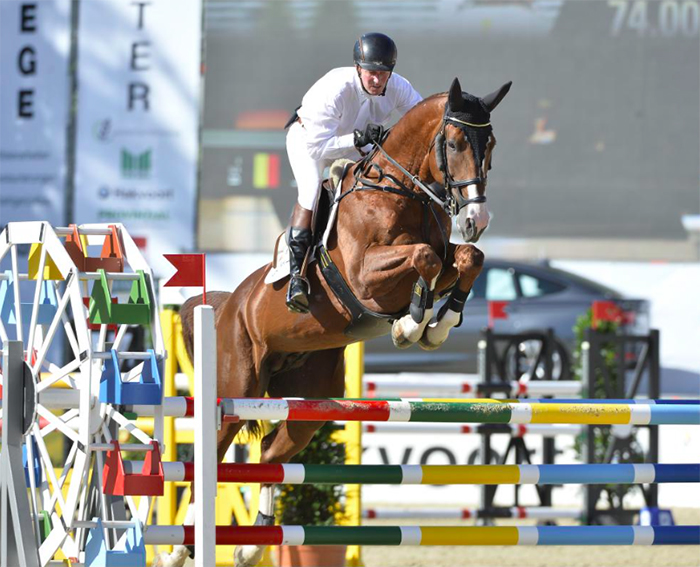
Agenix de Aiegneur
You accepted all the progeny of Agenix de Aiegneur today, were you satisfied with this?
“Yes. We have one who is on the line of Ratina, Horse No 1, Ratina is often a very good mare line. The No. 2 is in the Premier stallions, it is from the line of Plot Blue, and the other is from Clearway out of a normal mare line. Then Agenix / Diamant, we have not so many stallions from Diamant in the KWPN breeding, because most of the Diamants do not have much expression, and that is what we like. In Belgium it is only important that they can jump and they have scope, but we like expression.”
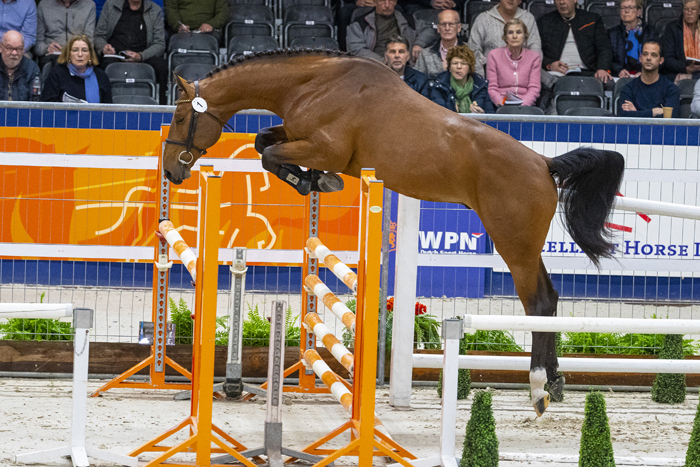
By Agenix out of a Diamant mare…
Story continues below advertisement
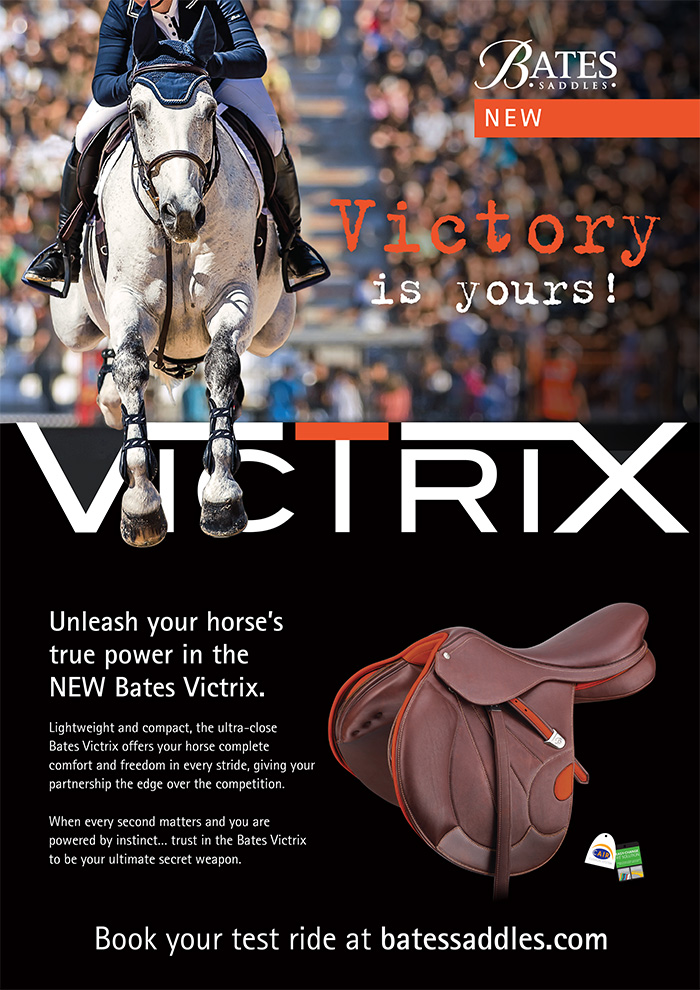
But the commission was prepared to take a smaller horse…
“No. 53, the Comme il faut / Bustique, he was 1.63m, he’s rectangular, he jumps elastic, not spectacular. It is important a horse that views the situation, he was always watching the jump, a little bit forward, a little bit back, he has brains for jumping. It is very important when you are jumping that the horse and rider do it together, the horse thinks with the rider. The second mother is from Quidam de Revel, she was champion of Holland in the 1.60 classes.”
“We would have liked to bring him in the premium stallions, but at 163, approved is no problem but not for the premier.”
I thought it was interesting in the last group today, a couple of them were out the lines of Wiepke’s mares that he showed me 20, 30 years ago – Hyacinthe, Shoroya – amazing that those mares are still influential and up close on the pedigree…
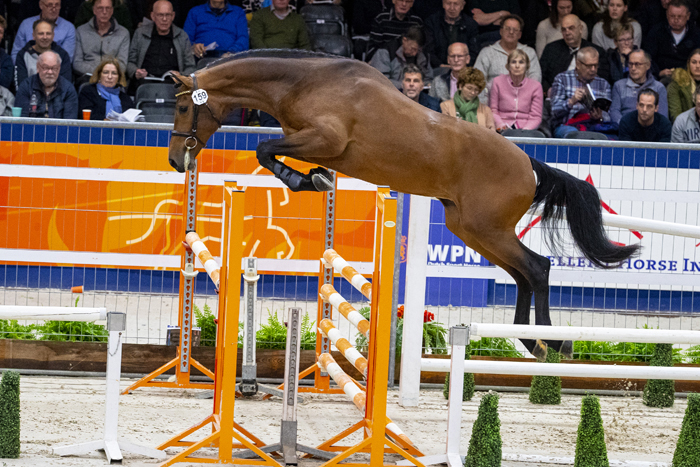
My Favorite, by Impressive VDL and out of Heraya, a great grand-daughter of Soraya, and the great grandsire, the stallion that ‘made’ VDL – Nimmerdor
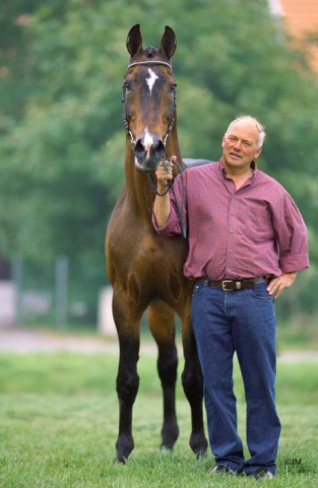
The stallion that started it all – Nimmerdor, with Wiepke van der Lageweg
“I think in the future, the mare line is very important for breeding because the semen of the stallion you can send it all over the world, but with a good mare, if you have a good filly foal, you can sell the mare and keep the foal and then generation after generation you get good horses.”
Story continues below advertisement
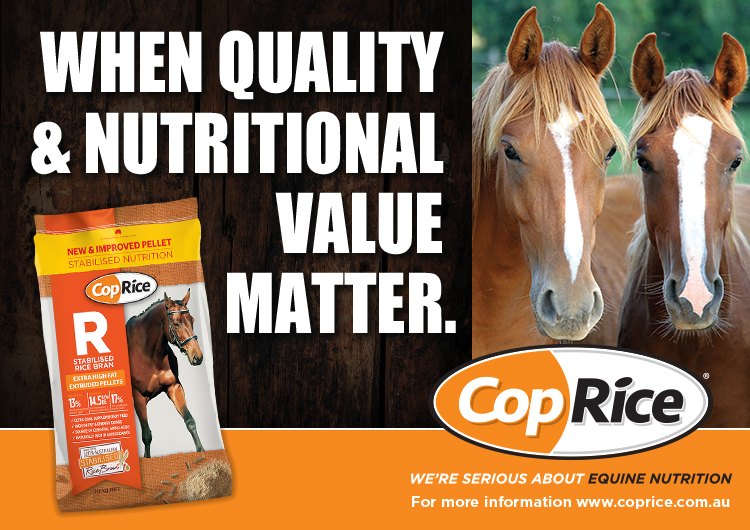
“There’s one problem when you go with embryo transplants, then there can be from one mare a lot of offspring, then you can have the tendency to inbreed, and that is difficult. You see in Belgium where they have done embryo for 20, 25 years, and they have very good products on the mare line, but when you do that 20, 25 years, then more breeders have the same mare line, then you have a problem.”
“We have an open selection where we can take Holstein, the Holstein studbook is more closed, but we are open, we can go to Belgium, we can go to Hanover, we can go to Holstein, we can go to France, we have to take all that and mix them together and that’s the KWPN horse. In Holstein, when they take a French stallion, they like to take a stallion by a French horse out of a Holstein mare, we prefer to take the French stallion himself, because it creates more of an out-cross.”
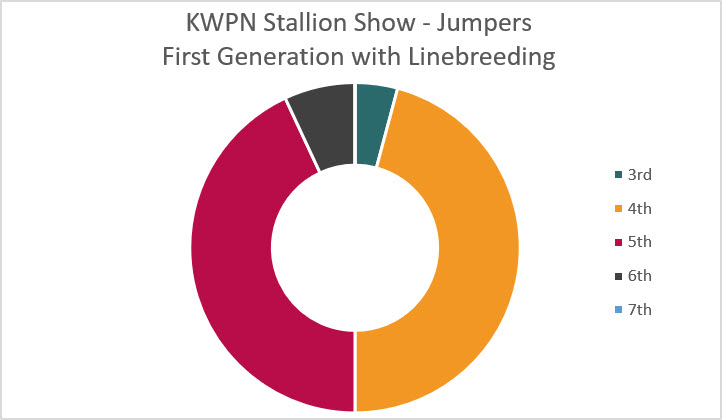
The horses are getting more and more elegant, do you think there is going to be a time when they lose strength and vigor?
“That’s the reason we have a functional conformation and an expressive conformation, and the functional conformation is important, if the expression is there as well, okay, but for many years the expression was more important than the functional, now we look to the functional, and the expression, we take it as a bonus.”
“The Inaico / Emilion, 165cm, that’s a functional horse, but the expression is normal. But a functional horse, power, a lot of scope, and Inaico is a brother of Hello My Lady, a very good international jumping horse. You can see him tonight in the competition, Inaico has a lot of expression, but it is not a horse with very long lines, so the sons of Inaico had to be better than Inaico and that is difficult, but that is what we try to do, to get offspring that are better than the father.”
“This is only one stage, then we have the performance test, other studbooks do not have a performance test but for us, the performance test is more important, then you can see how the horses go under saddle, how is the rideability? Does he work with the rider?”
Thoroughbred Blood %
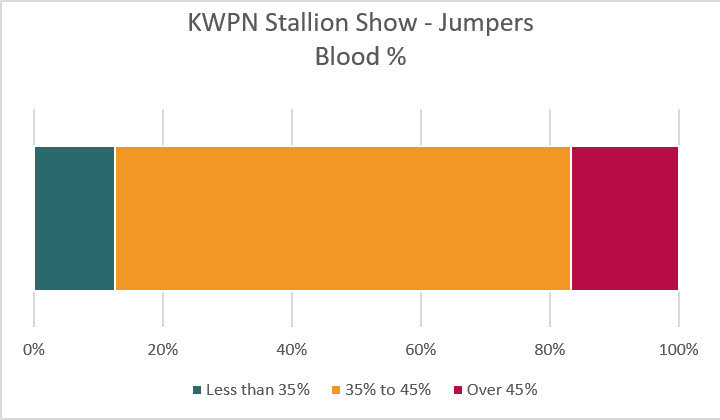
The vast majority of the jumper stallions presented had a blood percentage ranging from 35% to 45% – 51 of the 86 stallions initially presented. A further 12 stallions had a blood percentage greater than 45%; the highest blood concentration was in the selected stallion Maximum (Tangelo van de Zuuthoeve / Calvados) at 54.1%. The lowest concentration stallion was not selected to continue on, Amigo van Spalbeek Z (Aktion Pur Z / Flamenco de Semilly) at 28.1%.
We say, oh the license test is so important, and then we think of all the famous horses that have failed at the licensing and gone on to be great stallions, Cardento, Mr Blue…
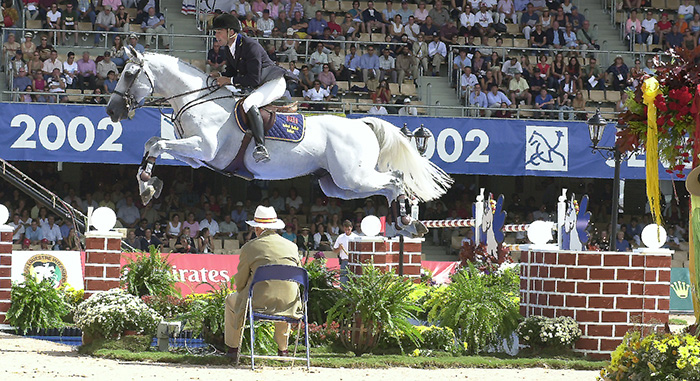
Cardento – shunned at first…
“Wait wait, I know Cardento, I was in the licensing commission in 1969. Cardento came for the second round, he was big, not much expression, and when he was free jumping, we thought he was not clever enough, and so he goes out. He is not to go to the performance test…”
And he was not the only one rejected, Quidam de Revel in France, Voltaire in Hanover, Mr Blue in Holland…
“The second viewing is just one moment, and it might be that the horse is not good free jumping, and then he goes to the sport, and he does good in the sport and he can come in. That’s no problem. This year we have accepted two horses, a five-year-old and a seven-year-old. They came back, that is always possible, we have a lot of moments when they can come back. Cardento when he was a young horse, when he was three years old, he was a big Holstein stallion, slow motion, but when he was trained and older, he was a very good performer at the highest level, and he had the chance in Sweden, because he got a lot of mares, and he did a pretty good job.”
And he did a pretty good job in Holland when he came back…
“We are happy that he came here. It is the same with Bustique. Bustique was a very nice horse and the breeders used him one or two years, he was jumping 1.35, 1.40, but we did not use him. Hendrix sold him to the United States and now his products are eight or nine years old and they jump very well. The stallion has come back to Holland and now the breeders can use him. That’s a good moment.”
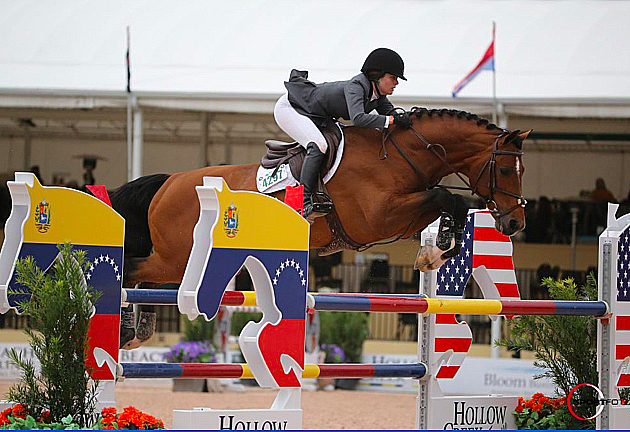
Bustique – back in Holland
What was the highest mark you gave?
“Nine. The points we give are not important. When you are in France, they give points and then you add the points together, he’s approved. But we don’t do that, we give marks and those marks are used by the KWPN for the index, but those marks are not for the public. When we have a horse that has jumped 7.5, 7.2, and the conformation is good and the pedigree is good then we say, go to the performance test, and in the performance test, we will look again. At the performance test, we give the marks to the public, and there, they need to score for jumping, 7.5 or higher.”
This year you have shortened the performance test again..
“Yes, now we have 35 days. It started with 100 days, a long time ago, then 70 days, and now in March / April we have 50 days, and then in December and January, we have 35 days. Thirty-five days is easier than fifty days, as I will try to explain. When we start riding a horse we go slowly step-by-step and after 35 days, we can give this horse some obstacles at canter rather than trot. When you train more, you want to see more, and you ask for more, and that is not good for the horse. Thirty-five days we are happy with, with the longer test, then the influence of the rider becomes greater. Now we do 35 days, and we jump from the trot, not the canter, and the balance is easier for the horse, not so much influence from the rider. Maybe in the future, we will only do the performance test in November / December, when the horses are three and a half.”
“The breeders are happy because it is less expensive – the 35 day test than the 50 day test – when you go to Belgium, the test is only three days. They come in, they jump five or six obstacles. The second day they have an outside rider, only riding, not jumping. Third day, they do the same…”
And they breed a lot of successful horses that way…
“They do, a lot of good horses.”
With Cornet Obolensky, he was such a great horse himself and he has produced such good horses but he doesn’t seem to have been a stallion maker, okay Comme il faut has a pretty special mother, but aside from him, it is hard to think of a Cornet stallion that has been successful out of the thousands of foals that have been born…
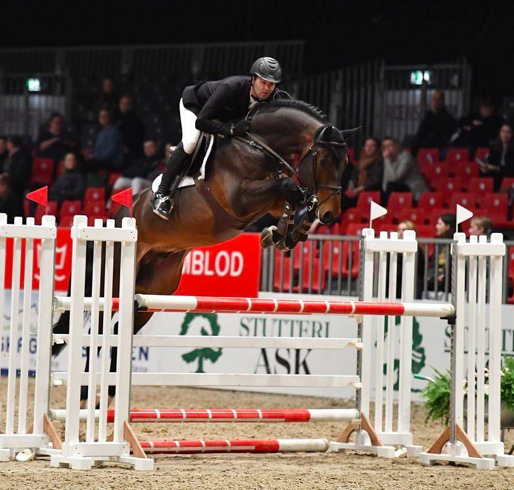
Ibolensky – a sire by Cornet?
“Yesterday we had Ibolensky, he is by Cornet, and we saw two good young stallions from him. Cornet Obolensky is a Belgian stallion, from a Dutch mare line, and he was very successful in Westfalia, but the mare line of Cornet is normal, not so super. His offspring are good…”
But not many stallions…
“No, that’s the same problem with Darco. In Holland we have Nimmerdor, he was a very good stallion in Holland – what is his best son? Heartbreaker, and we are very happy with Heartbreaker, and now we want to find a son of Heartbreaker as good as Heartbreaker, and for that we need a good mare line. It is the good mare line whose input can make a better offspring than the father.”
Have you found the Heartbreaker son?
“Not yet.”
And the view from the breeder?
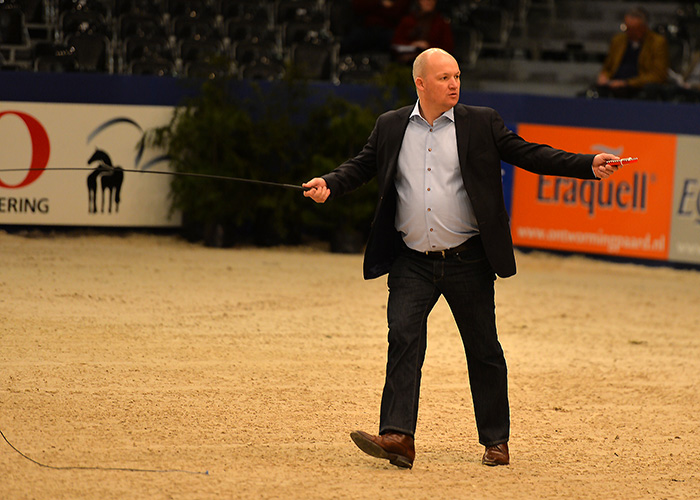
Wbe Ide van der Lageweg
The last group of young stallions were all owned by the famous VDL stud, and there was some feeling that they may have been the best group of stallions we saw over the two days. Wbe Ide, son of the VDL founder, Wiepke van der Lageweg, was sitting just behind me, and was, as always, press friendly. He was especially enthusiastic about Mr Cornet VG – who is by Cornet Obolensky out of an Indoctro / Lux mare:
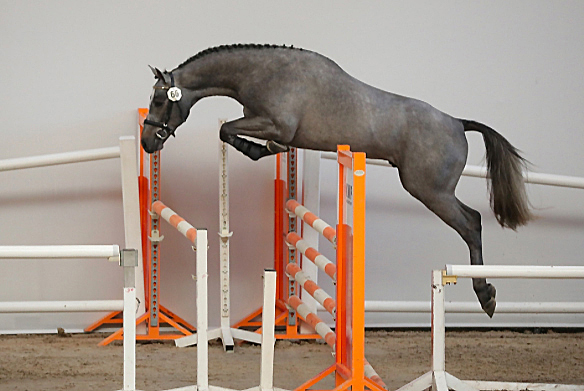
Mr Cornet VG – the most modern?
“I think he is the most modern stallion type that we have seen in two days here, he has a top pedigree, a top family, he’s a nice light model, careful, a lot of blood and he jumps always clear. The breeders have been breeding for many years with our stallions, we bought some foals from them, stallion foals, mare foals – there are more good horses from that family.”
Can you tell me a little bit about another of your stallions, Inaico?
“He’s the last approved stallion of Indoctro and of all his sons, he is the closest to his father. This is his first group of horses, the three-year-olds we show now, and they look really good horses, good gallop, light, good jumpers, modern horses. You will see him tonight, he is a very light stallion with a lot of blood, so he is very suitable for us to get more athletic horses, more sharpness in our breeding.”
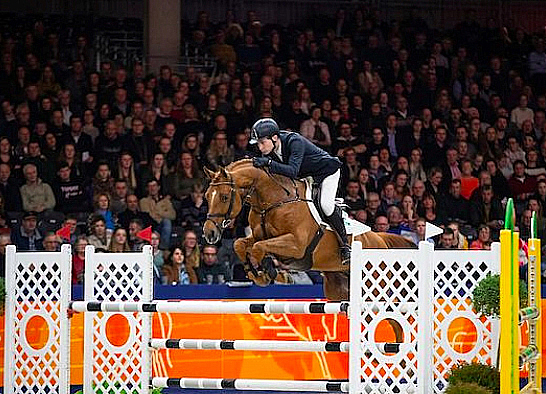
Sure enough, he won. Inaico and David Gill win the Z/ZZ class at the stallion show. Inaico is out of a BWP mare, Beach Quella by Baloubet de Rouet out of a Hercos mare. Hercos is by Nimmerdor out of a Lucky Boy mare, and competed 1.35.
What mares is he working well with?
“A little bit bigger stronger mares, he makes them a little bit lighter so you need a mare with a bit of length and height.”
Can you tell me a little bit about Impressive?
“Impressive is the opposite. He is a big stallion with a lot of scope and he gives a lot of uphill in the type. His offspring have a lot of scope, good gallop, they are very quick from the ground. Douglas, the father of Impressive, was also very sharp and quick from the floor. Impressive stamps it on his children, they are very scopey and careful and they have a good mind, they just want to go to the other side of the fence.”
His mares?
“He’s big so he needs a bit lighter mares. He’s the brother of the Indoctro stallion we sold to Australia, same mother.” (Wbe Ide is referring to Twins Easton, who is now competing successfully at Grand Prix level with Aaron Hadlow…) Impressive is by Douglas who combines Darco and Capital out of a Contender / Corofino mare.
Cor Loeffen remarked “Contender gives you power and canter, I think we have more Contender mares in the KWPN than in Holstein. There it is Casall, Casall, Casall, Casall…”
Back to Wbe Ide: It is interesting, looking at some of those mares on the pedigrees of horses here, they were the mares we saw at your farm thirty years ago – Hyacinthe, Sorayo…
“Those are two foundation mares that we started with in the 70’s and they are still some of our most important families in breeding. Incredible. At that time they were already modern horses, and they have always been breeding with good young stallions to get on, and on, and on. We have maybe seven generations already but they are still in our best bloodlines.”
Want to breed your own jumping star? There’s a wonderful selection of frozen semen from the world’s best jumping stallions at IHB
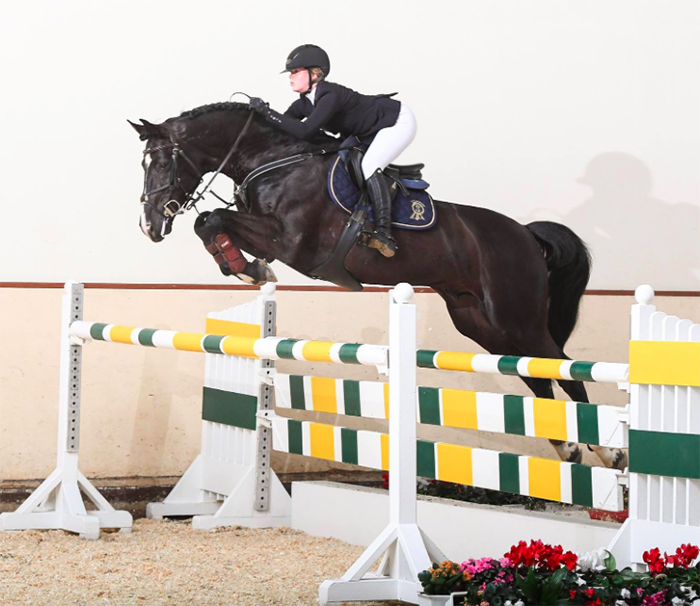


thank you for sharing your information such a powerful horse .I love the older stallion Grannus line I was lucky to have one and am looking for smaller one for my granddaughter who is 13 yrs old to bring along for her.